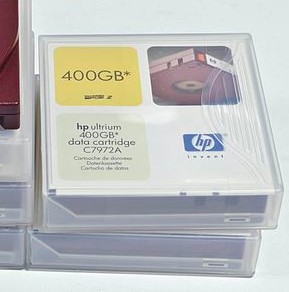
DRR must be mentioned a hundred times in every one of my working days. DRR is such a fundamental part of a storage vendors solution and value prop, that it features in absolutely every discussion our architects and systems engineers have every day. We even have folk that are gurus at modelling complex scenarios based around DRR. Of course it’s just one part of a storage vendors technical arsenal and differentiation, but boy is it an important one.
So…. Bear with me while I scream……..,
Aaaaaaarrrrrgggghhhhhh!
WHY DO YOU LET YOUR PROCUREMENT TEAMS IGNORE DRR?
No but seriously. Millions of R&D $ go into developing amazing DRR algorithms, the smartest minds in mathematics come up with the smartest ways of squishing your data up. Don’t forget – DRR isn’t just about the cost efficiency of putting more data on less silicon. There are so many other effects DRR has for you: the chips last longer, because you write to them less, your arrays are much denser, which means less power, less space, less heat, less cabling, less licensing, less maintenance. All in all – its that same old trusty lower TCO view we keep trying to hammer home.
BUT…. If you read Parts 1 and Parts 2 of this blog – somewhere between not really understanding DRR, not trusting your storage vendor and not understanding your data means that so many organizations are ignoring DRR when they select their storage vendor.
Its madness. I kid you not, one recent RFP competition, the buying organisation declared this:
“…we will not consider a vendors DRR and Effective storage capacity, as the effective capacity is different vendor by vendor”. 🤦♂️
a storage buyer
[Side tech note regarding common storage capacity terminology:
“Raw” = the actual silicon storage in the array
“Usable” = the volume of capacity available for you to actually write your data to (such as after redundancy overhead)
“Effective” = The Usable multiplied by the DRR]
Simple example: 1 Tib Raw, might be 800 GiB Usable, and 4 TiB Effective (DRR of 5:1)Ok genius – so all those R&D $ mean nothing? You’re going to buy an array that is going to cost more than it needs to today and for the next 5 years, bla bla bla and so on and so blindly forth…..

Here’s a thought – remember those old days in the 90’s when you used to buy data tape cartridges? The capacity shown on the box used to be the compressed capacity. Should storage array vendors stick a badge on the box with the guaranteed capacity on it?. After all, why do we reveal the complexities of raw, usable, and effective space? What do you actually care about? Let me know your thoughts on this.
[democracy id=”2″]
So – If your storage vendor tells you that for the type of data you intend to put on an array – that it would be reasonable to get say 3:1 (Databases), 5:1 (Virtual servers), or even 10:1 or better (Virtual desktops) – should you just ignore that?
“If you needed 500Tib for your new work-from-home Virtual Desktop environment – would you buy 500TiB usable – or would you save a whole bunch of cash and go for the 100 TiB at 5:1 DRR?“
If you are still evaluating storage vendors on “usable” capacity and not having a sensible discussion about DRR, or maybe even a DRR guarantee (known sometimes as a “Right Size Guarantee” – RSG) – you may as well keep on buying some legacy spinning rust and some more of those tape cartridges like the old days!
On the other hand – if you would rather your storage vendor took the risk of achieving a good DRR or not. Consider reading Part 4 of this blog series, where I’ll discuss an innovative as-a-Service model with one of my esteemed colleagues.
![]()
You may also like
-
What does the 1984 The Terminator movie and the 2024 EU AI Act have in common?
-
A Tale of Two Transformations
-
With Pure Storage’s recently announced extended partnership with Microsoft Azure – You might be thinking “Why on earth would Azure want their customers to reduce their cloud spend?” What’s in it for Microsoft?
-
A Perfect Storm for Tech Innovators.
-
5 Hits and 5 Misses when buying Enterprise Storage…..
 Are you expecting a lower pay rise next year
Are you expecting a lower pay rise next year  What does the 1984 The Terminator movie and the 2024 EU AI Act have in common?
What does the 1984 The Terminator movie and the 2024 EU AI Act have in common?  A Tale of Two Transformations
A Tale of Two Transformations  With Pure Storage’s recently announced extended partnership with Microsoft Azure – You might be thinking “Why on earth would Azure want their customers to reduce their cloud spend?” What’s in it for Microsoft?
With Pure Storage’s recently announced extended partnership with Microsoft Azure – You might be thinking “Why on earth would Azure want their customers to reduce their cloud spend?” What’s in it for Microsoft?  A hug, a kiss, a shake, a bro-hug?
A hug, a kiss, a shake, a bro-hug?  A Perfect Storm for Tech Innovators.
A Perfect Storm for Tech Innovators.